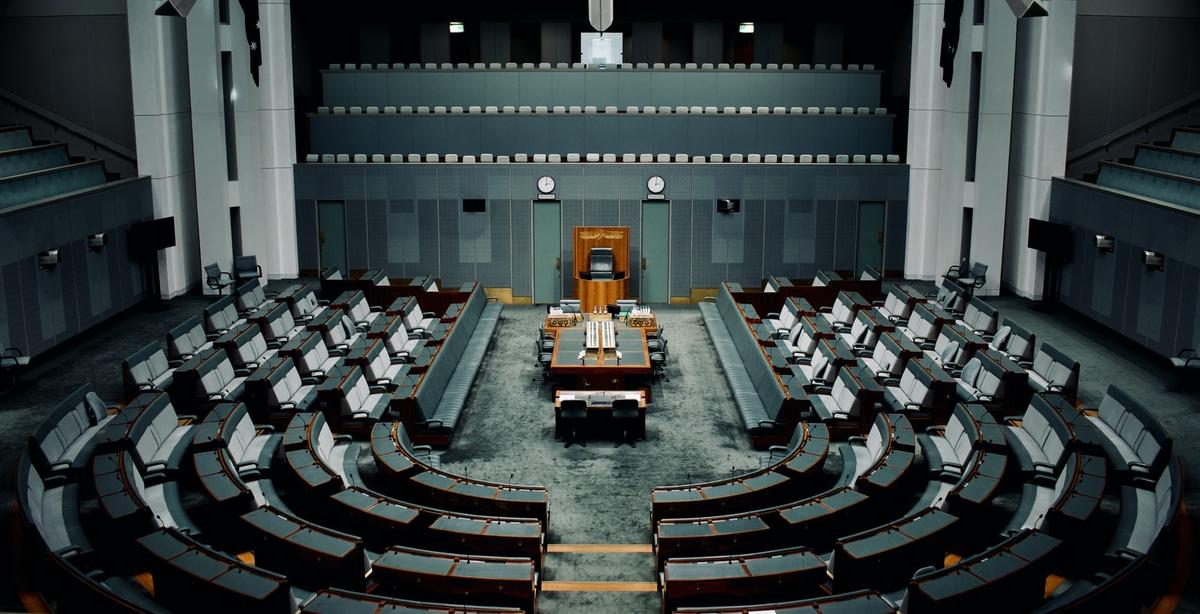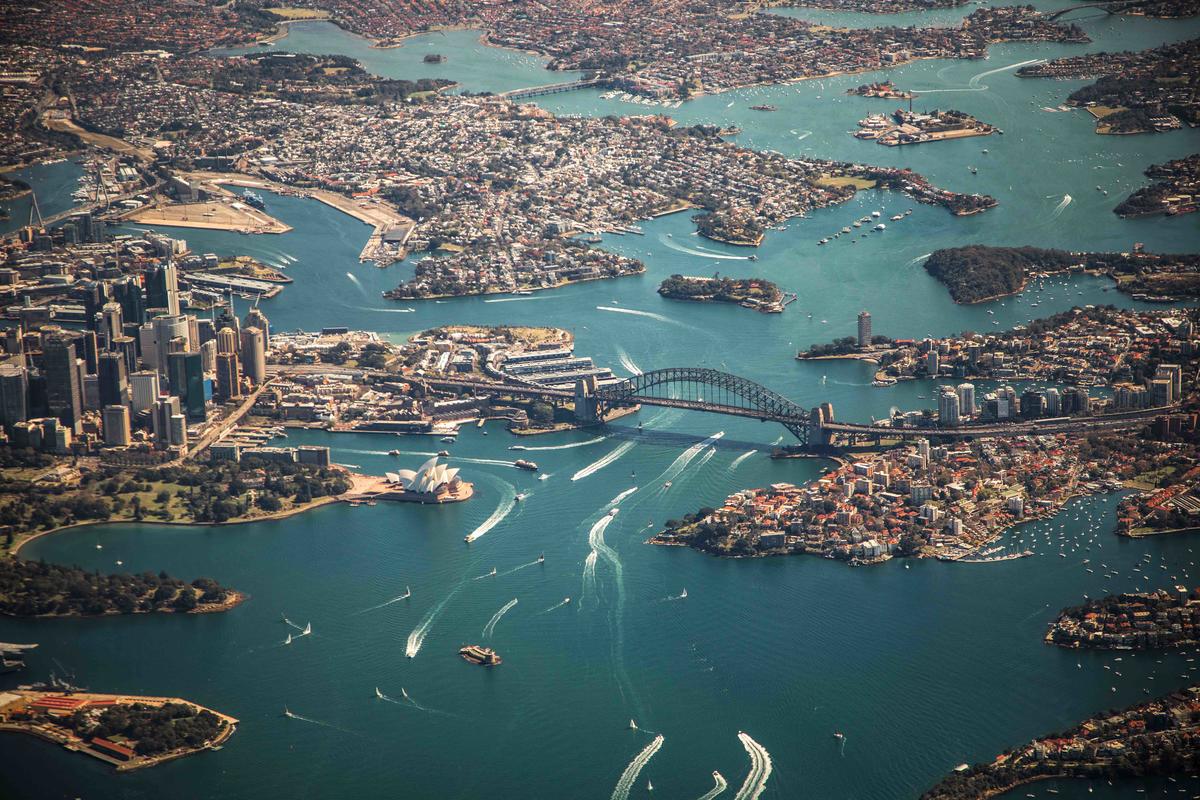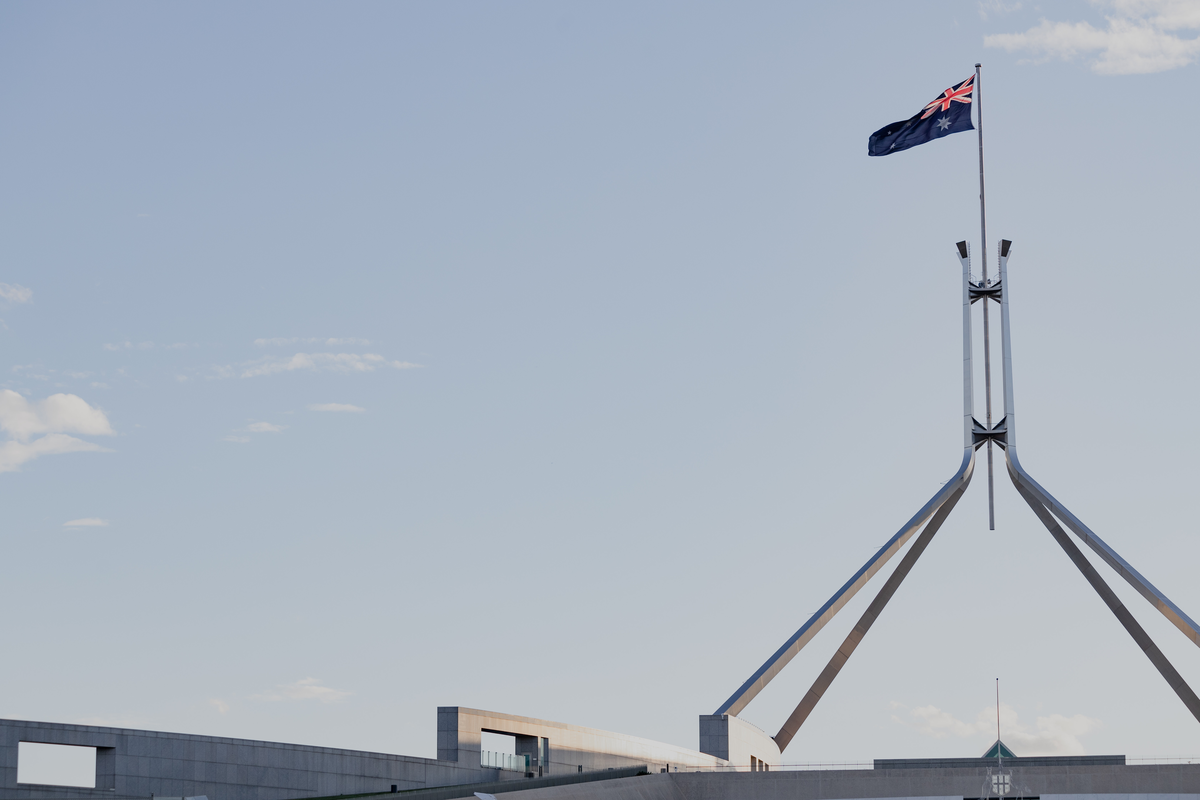Last night’s Labor budget, the first in almost a decade, provided the first political and economic down payment to secure a period long-term government for the Australian Labor Party (ALP).
This economic statement is effectively a budget to build on, putting in place the foundations for ongoing reform and change which will in the minds of Labor strategists help ensure that the government of Prime Minister Anthony Albanese remains on the Treasury benches for the 2020s and beyond.
According to the Treasurer, Dr Jim Chalmers, this budget represents a first step not a silver bullet, and charts the course for more Labor budgets to deliver the improvements that have long been promised by Labor. The Budget has been positioned to instill confidence across Australia. It framed many of the economic and social initiatives contained in the statement as family friendly - especially against the backdrop of growing cost-of-living pressures and the new inflationary environment experienced by households and businesses.
Labor’s headline was that it had met all its election promises, but the Budget authors couldn’t resist a shot at the previous Coalition government. The ALP’s economic team claimed this Budget corrects the wrongs of the previous Coalition Government on key issues including debt, climate change, reconciliation, health, and childcare.
"This Budget does more than end a wasted decade – a decade marked by energy chaos, a crisis in aged care, skills shortages and stagnant wages, and not enough to show for a trillion dollars in debt. It does more than draw a line under the drift, decline and decay that defined it"
Treasurer Jim Chalmers
The government was quietly confident that Australia is set for modest economic growth but also provided plenty of hints that future budgets would be tougher, acknowledging economic headwinds already affecting key trading partners. Prime Minister Albanese said addressing the skills shortage with 480,000 free TAFE places and boosting the skilled migration cap to 195,000 annually would be key. He linked Net Zero targets to industry, noting business was well ahead of government on this front, and expressing a desire to harness Australia’s abundance of sun and wind for renewable energy.
The Prime Minister, Treasurer and Finance Minister last night each emphasised that the government does not have all the ideas and wants to work collaboratively with the business community, encouraging business leaders to open dialogues.
For all the calls for unity and cooperation, there was one major source of disquiet for the business community gathered in Canberra - the upcoming introduction of new industrial relations legislation which has been flagged for release later this week. Australia’s captains of industry are increasingly nervous about Labor’s proposed package of reforms and are looking to marshal their forces to campaign against any dramatic changes put forward by the government.
Although Budget night is traditionally focused on the economic numbers, outputs and outcomes, the Prime Minister finished his evening by focusing on constitutional change and the referendum to establish an Indigenous Voice to Parliament. Mr. Albanese called on everyone gathered at Labor’s Budget dinner to vote yes, describing the upcoming referendum during this financial year as an opportunity for unity and advancement.
The Budget’s Bottom Line
History has shown economic management is one of the most contested issues in politics. To change the narrative that Labor “cannot be trusted with the nation’s finance,” this Budget reinforces the careful consideration and restraint the government has made when making “hard decisions for hard times.”
To avoid adding to inflationary pressures, the government’s new policies and election commitments have been largely offset across this year and the next. Additionally, nearly all the new tax upgrades over the forward estimates have been returned to the budget, not spent.
Summary of Revenue
To pay for the policies and election commitments Labor promised, Labor identified $22 billion in savings over the next four years from previous commitments made under the former Coalition government. These savings include reduced spending on external contractors, consultants, advertising, travel and legal services.
Source: Budget October 2022-23
Multinationals will see an increase in their tax bill, as the government extends tax compliance programs and gives the Australian Tax Office the resources needed for greater regulation. Together, these initiatives save a further $4.7 billion over four years.
Summary of Expenditure
This Budget saw increased funding directed to traditional Labor priorities of health, education and social services.
Source: Budget October 2022-23
New focuses for government spending included:
- Record investment of $1.7 billion over six years to end violence against women and children.
- $1.2 billion in practical measures to Close the Gap for First National people and communities, and to begin preparations for a referendum on a Voice to Parliament.
- Allowing older Australian to keep more of their pension when they work.
- Responding to recommendations from the interim report of the Royal Commission into Defence and Veteran Suicide.
- Establishing the National Anti-Corruption Commission.
Budget Spotlight: Key themes
A wellbeing budget: Measuring What Matters Statement
Last night, when questioned by veteran journalist Ray Martin, the Treasurer nominated the changes to education as one of the items that he was proudest of in the Budget. The changes were featured as a key investment that allows Australians to grasp opportunities and improve wellbeing. Initiatives such as improving the wellbeing of students throughout Australia have also been funded as part of the Government’s approach to focus on wellbeing and being family friendly.
All schools will benefit from the $203.7 million Student Well-being Boost, with the average school receiving $20,000 towards improving student mental health and well-being along with a new voluntary mental health check tool to assist schools to identify students who are struggling, so they can get the help they need.
Further, $15.1 million in funds has been extended to tailored small business mental health and financial counselling programs, NewAccess for Small Business Owners and the Small Business Debt Helpline. These programs have assisted many small businesses through the challenges of COVID-19 and recent natural disasters.
Finally, the Government is aiming to improve the mental health and well-being of all Australians by restoring the 50 per cent loading for telehealth psychiatry services in regional and rural areas and expands the headspace network.
While this Budget did not feature any explicit wellbeing goals, it has started the conversation about how to better measure what matters to Australians with the Treasury set to develop a stand-alone Measuring What Matters Statement in 2023.
Targeted cost-of-living relief
Cost-of-living relief has been one of the most talked about topics in 2022, and has framed much of Australia’s political discourse. The Treasurer continued to emphasise the need for the Federal Government and the Reserve Bank to work in tandem to address the impacts of inflationary pressures on households and businesses.
Labor’s first Budget delivered a $7.5 billion five-point plan for cost-of-living relief:
- Cheaper childcare: From July 2023, 1.2 million Australian families will have access to more affordable childhood education and care.
- Expanding Paid Parental Leave: An investment of $530 million to progressively scale up the current Paid Parental scheme, reaching six months paid leave in 2026. For two-parent families, a portion of the leave will be reserved for each parent under a use it or lose it policy – in a bid to increase women’s participation in the workforce.
- Cheaper medicines: From January 1, 2023, 3.6 million Australians will have access to cheaper medicines on the Pharmaceutical Benefits Scheme, creating a saving of $12.50 per script.
- More affordable housing: Through an agreement between governments, investors and the construction sector, the Budget unveiled a national plan to build 1 million new homes before 2030. This is in addition to the $10 billion Housing Australia Future Fund, promised by the government before the May election, which will see an additional 30,000 new social and affordable homes built in the scheme’s first five years.
- Increasing wages: No new policies were outlined in the budget, but the government pointed to its support of the Fair Work Commission’s wage increase decision. The government’s industrial relations legislation, which is expected to be introduced this week, is also expected to increase the wages of ‘feminised’ industries.
Rural and regional infrastructure pipeline
The Finance Minister, Katy Gallagher, reflected on the months of work that the economic team spent in getting out the red pen and going line-by-line through the nation’s finances. The Finance Minister has found $22 billion in savings, including axing a number of the previous government’s rural and regional funds.
On Monday, Regional Development Minister Catherine King confirmed that the Labor Government would scrap round six of the Building Better Regions Fund, as well as the Community Development Grants Fund.
Labor has announced new programs including the Growing Regions Program and the Precincts and Partnerships Program, with an investment of $1 billion over the next few years.
The Growing Regions Program will be available to councils and community groups in regional and rural areas and will fund local infrastructure projects like libraries. The regional Precincts and Partnerships Program will allow the Federal Government to work with State Governments and local councils to transform regional centres through investments in place-based projects.
Details by key portfolio
Health
- $235 million to commence the rollout of Urgent Care Clinics.
- $750 million for the Strengthening Medicare Fund.
- $1.4 billion more for new and amended listings on the PBS and other Medicines Programs, with the PBS maximum general co-payment will be reduced to $30 a script from 1 January 2023, saving up to $12.50 per script for approximately 3.6 million Australians per year. This measure is expected to save Australians over $190 million in out-of-pocket costs.
- $800 million budget windfall from a crackdown on the black-market vaping and e-cigarette industry.
Education
- $1 billion investment in fee-free TAFE and vocational education places. Providing 180,000 places next year – the first stage in a plan for nearly half a million fee-free TAFE courses for Australians – learning skills for jobs in priority areas, like the care sectors and the digital economy.
- $770 million for better schools, happy and healthier students, and more qualified teachers.
- $485 million to create 20,000 new university places over the next two years for students from disadvantages backgrounds.
- $270.8 million to support improvements to ventilation and air quality, as well as larger refurbishments to public schools.
- $5.8 million for the diversity and skills in stem, women in STEM and Entrepreneurship program plus an independent review into Government programs to ensure they support greater diversity in Australia’s science technology sectors.
- $4.7 billion over 4 years from 2022-23 to make early childhood education and care more affordable for Australian families.
- $531.6 million over 4 years from 2022–23 to expand the Paid Parental Leave scheme and provide greater support to families. In 2026, families will be able to access up to 26 weeks of Paid Parental Leave.
Foreign Affairs and Trade
- $100 million towards Australia’s participation in the 2025 World Expo, held in Osaka, Japan. Australia’s participation at the expo will display clean energy and low emissions technologies, and aims to cement Australia’s position as a preferred partner on energy security
- $19.6 million to the Singapore-Australia Green Economy Agreement. The Agreement will support bilateral cooperation in clean hydrogen and renewable energy trade.
- $48.5 million to support proactive engagement with the United Nations Framework for Convention on Climate Change.
National Disability Insurance Scheme (NDIS)
- $437.4 million over 3 years from 2022–23 to support people with disabilities and their families.
- $385.0 million in 2023–24 in additional funding to the National Disability Insurance Agency (NDIA) to support National Disability Insurance Scheme (NDIS) participants.
- $21.2 million over 3 years from 2022–23 for NDIS Appeals providers to support people with disabilities and their families.
- $18.1 million over two years from 2022–23 to review NDIS design, operations and sustainability.
- $12.4 million in 2022–23 to introduce an expert review pathway to resolve disputes arising from NDIA decisions.
Climate Change and Energy
- $20 billion of low-cost finance under Rewiring the Nation to upgrade Australia’s electricity infrastructure.
- $157.9 million to support the implementation of the National Energy Transformation Partnership.
- $224.3 million to deploy 400 community batteries and $102.2 million to establish a Community Solar Banks program.
- $40.9 million to increase oversight of gas markets by the ACCC and implementation of reforms to the Australian Domestic Gas Security Mechanism, and $23 million for gas reliability and security measures agreed with State and Territory Energy Ministers.
- $1.9 million to establish Powering the Regions Fund which will provide dedicated support to transition regional industries to net zero.
- $500 million to reduce transport emissions, through the Driving the Nation Fund, and $345 million to cut taxes on eligible electric cars from fringe benefits tax.
- $42.6 million investment in the Climate Change Authority to restore its capability and empower it to deliver independent climate change advice.
- $6.2 million will help implement the introduction of standardised, internationally aligned climate disclosure requirements for large businesses.
Cybersecurity
- $31.3 million to extend the cyber hubs pilot, which will strengthen the line of defence for Government agencies.
Defence and Veterans’ Affairs
- $15.5 million in 2023–24 to continue to support the Department of Veterans’ Affairs to engage with the Royal Commission into Defence and Veteran Suicide.
- $24.3 million over 4 years from 2022–23 (and $2.0 million per year ongoing) to improve the capacity of the Department of Veterans’ Affairs to model increased demand for services.
- $46.2 million over 4 years from 2022–23 (and approximately $17.8 million per year ongoing) to expand access to the Defence Home Ownership Assistance Scheme to support Australian Defence Force personnel and veterans to purchase their own home.
- $147.5 million over 4 years from 2022–23 (and $23.9 million per year ongoing) to expand Australia’s engagement with Pacific partners and increase support to regional security priorities.
- $15.0 billion investment over 7 years from 2023–24 to establish the National Reconstruction Fund to support, diversify and transform Australian industry and the economy through targeted co-investments in 7 priority areas including defence capability.
- $185.6 million over two years from 2021–22 in military assistance, including Bushmaster Protected Mobility Vehicles, armoured personnel carriers, lightweight towed howitzers and other military equipment, and a contribution to NATO’s Ukraine Comprehensive Assistance Package Trust Fund.
- $18.4 million over 4 years from 2022–23 to allocate additional 3-year Temporary Humanitarian Concern Visas (subclass 786) to Ukrainians in 2022–23.
- $8.7 million in 2022–23 to assist Ukraine’s Border Guard Service.
EDELMAN GOVERNMENT ADVISORY: HELPING YOU ACT WITH CERTAINTY
This Federal Budget update has been prepared by Edelman Global Advisory (EGA) Australia and Edelman Australia. For information on EGA’s advisory and government communications services, please contact Peter Fraser at Peter.Fraser@Edelman.com.




